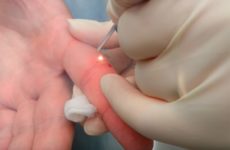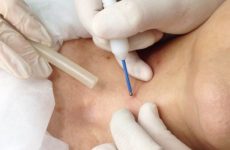Содержание:
- 1 Introduction
- 2 Cryodestruction of papilloma: what is it
- 3 How does liquid nitrogen affect education?
- 4 In what cases is the procedure prescribed?
- 5 Contraindications
- 6 Anesthesia and liquid nitrogen removal sequence
- 7 Advantages and disadvantages
- 8 Condition of the skin after nitrogen treatment
- 9 Skin care after freezing, adverse reactions
- 10 Alternative removal methods
- 11 Cost and feedback on the procedure
- 12 Conclusion
Introduction
Papillomas are small benign epithelial tumors 0.2-10 mm in size, having a body color. Most often they occur on the skin, but sometimes they form on the mucous membranes. The most common places for the appearance of papilloma are the neck, hands, face, armpits and intimate areas.
The reason for the appearance of these small formations is the papilloma virus, which is carried by 80% of the world’s population; despite such an impressive figure, not all carriers of the virus develop papillomas on the skin. An unfavorable factor for the occurrence, increase in the number and size of formations is a weakened immune system.
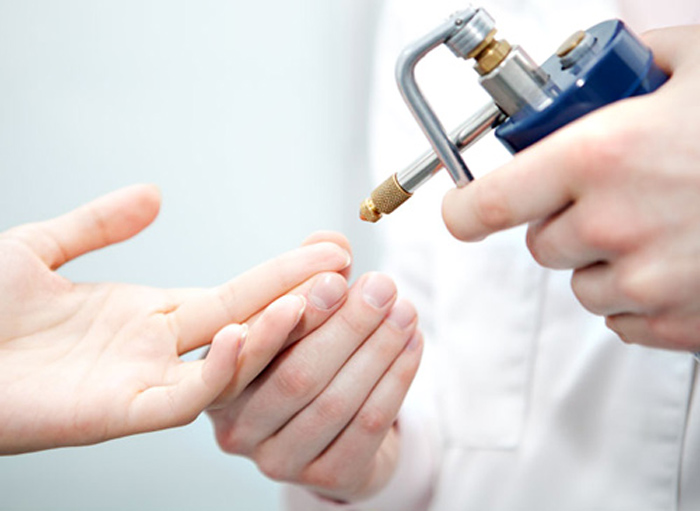
Papilloma not removed in time can lead to serious consequences. As tumors increase in size, the infection will spread to other areas of the skin, which can seriously harm a person’s overall health. It has also been found that numerous papillomas on the female body can cause cancer, because their oncogenic properties affect the rectum and cervix.
Removal of papilloma is a mandatory procedure for people who have formations on the skin or mucous surfaces. Today, there are several ways to solve this problem. One of the most popular methods of treating benign neoplasms is applied using liquid nitrogen, and is called papilloma cryosurgery .
Cryodestruction of papilloma: what is it
The term “cryodestruction” comes from the English word “cryodestruction”, which combines the root “cryo” (“cold”) and “destruction” (“destruction”). The procedure is also called cryotherapy.
Cryodestruction of papilloma, thus, implies exposure to the very formation of low temperatures, which determines the effectiveness of the procedure. Properly performed cryosurgery not only stops the growth and spread of papilloma on the skin, but also acts as a vaccine on already infected tissue.
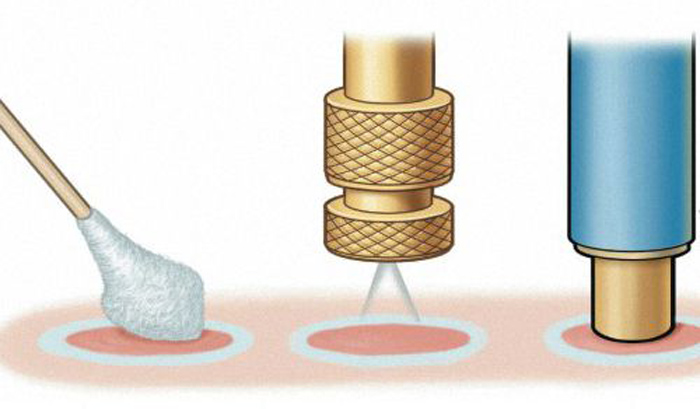
How does liquid nitrogen affect education?
Liquid nitrogen has an extremely low temperature. It freezes living tissue with which it comes into contact, including papillomas. Thus, applying a small amount of liquid nitrogen to the affected areas makes it possible to destroy the altered pathology of the tissue without affecting the space surrounding it. After exposure to liquid nitrogen on papillomas, there is no bleeding, because the arterial and venous vessels located in a particular area are blocked during the freezing process.
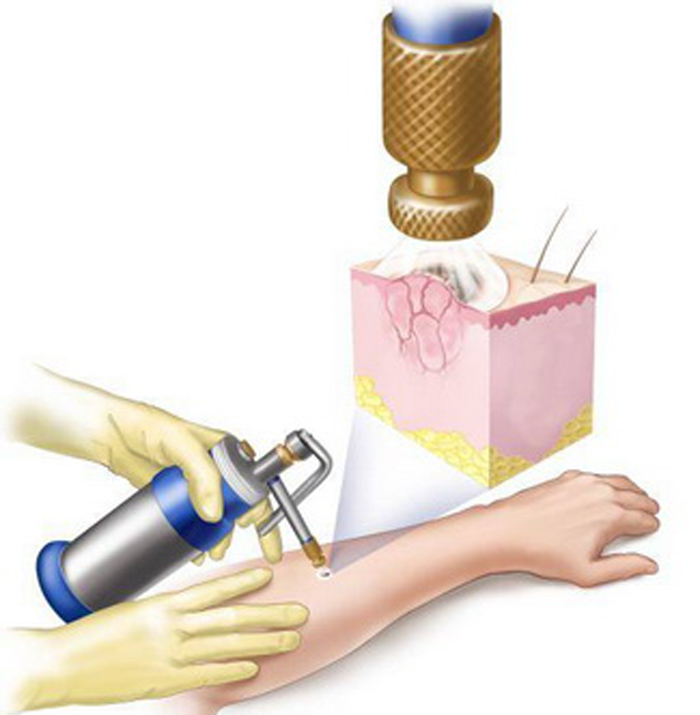
In what cases is the procedure prescribed?
With the help of cryotherapy, benign and flat papillomas are removed, and this method is widely used to remove tumors from the mucous membranes of organs.
Indications for mandatory cryodestruction of formations is their trauma. Less often – aesthetic discomfort.
Contraindications
Contraindications to the cryodestruction procedure are not so few. Refusal to carry it out is received first of all by people with an increased sensitivity of the body to cold.
If the person who wants to remove papillomas has an acute infectious disease, he will also have to wait while receiving prior medical treatment. If the patient has inflammatory processes in the internal organs, cryodestruction also cannot be performed.
And, of course, the tendency to cancer is an absolute contraindication. If people are cured of angina pectoris and influenza, and subsequent cryodestruction does not harm them, then oncology, even defeated, can resume after such a procedure in the place where the benign tumor was affected. Also, at the slightest sign of a malignant tumor, completely different procedures will be required.
Anesthesia and liquid nitrogen removal sequence
The procedure for freezing papilloma with liquid nitrogen is carried out in 3 stages:
- preliminary stage: if the patient has a low pain threshold, he is subjected to anesthesia. Also, anesthesia is used in cases where the formation is large or located on a rather sensitive area of \u200b\u200bthe skin. In addition, anesthesia is used during cryotherapy for children. Painkillers – novocaine or lidocaine. In other cases, the anesthesia stage can be skipped, and the procedure can be started directly from the freezing itself;
- freezing stage: the duration of application of the applicator does not exceed 120 s. During the procedure, the patient may feel a tingling sensation on the treated area of the skin;
- final stage: treatment with a disinfectant solution.
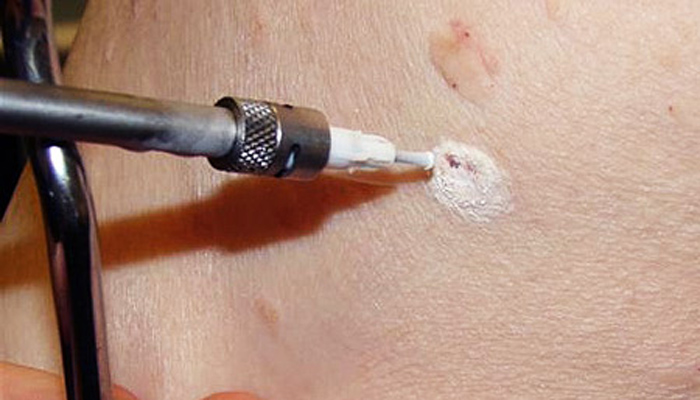
Advantages and disadvantages
The cryodestruction procedure has both advantages and disadvantages. Among the advantages are the following:
- universality (suitable for papilloma of any type and for any part of the body);
- painlessness (exceptions are patients with a low level of pain threshold);
- atraumatism (passes without bleeding, since the work of the capillaries is blocked);
- no need for anesthesia;
- lack of possibility of recurrence;
- the procedure does not promote cell malignancy;
- the procedure does not require long preparation and subsequent complex rehabilitation;
- short duration of the procedure.
The disadvantage of this method is the difficulty in controlling the depth of impact on the tissue. If the exposure is too deep, a small burn (and later a scar) may appear; if the impact is not deep enough, the papilloma may not be completely removed, and it will be necessary to repeat the procedure. In addition, a second procedure may be required to remove a significant amount of papillomas formed as a result of poor-quality cryotherapy performed earlier.
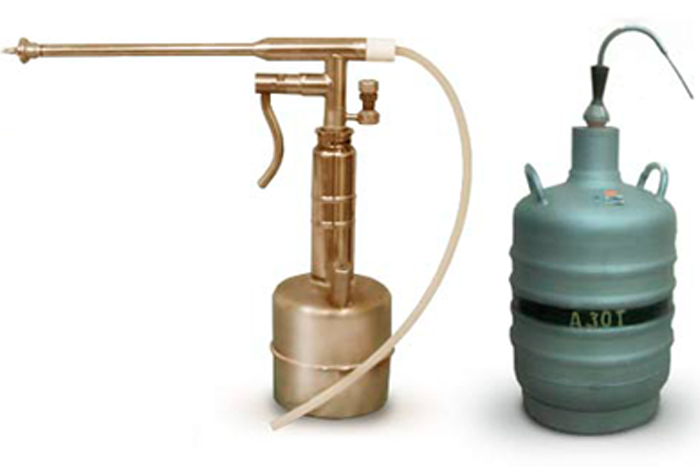
Condition of the skin after nitrogen treatment
Cryodestruction is not accompanied by side effects in the form of local reactions – hematoma, hyperpigmentation, which is especially important when removing papillomas on the face. On the first day after the procedure, hyperemia is observed on the entire treated skin, i.e. it fills with blood from the vessels and swells.
The next day, a blister forms, after which it becomes inflamed. There is no need to be afraid of this – such skin transformations are a completely normal process of cell death. For 2–3 weeks, inflammation may persist at the site of the former papilloma; after this period, liquid comes out of the blister. Further, the process of restoration of the epithelium begins, which can last up to 6 months (in the case of processing large areas).
The place treated with liquid nitrogen, i.e. the papilloma removal center, is quickly restored. After the procedure, there are no rough scars, since liquid nitrogen does not change the structure of the tissue. In some cases, an inconspicuous scar may remain, however, such situations happen very rarely. Usually, in the place where the tumor was previously present, smooth and clean skin remains.
Skin care after freezing, adverse reactions
After the procedure, you can not stick the adhesive plaster on the bladder itself, which was formed as a result, since this can damage it. It is allowed to apply a gauze bandage to the area, and already on top – an adhesive plaster. From the first day, you can take water procedures with extreme caution. If the treated area hurts, on the advice of a doctor, you can take an anesthetic tablet (Analgin, Ketorol, Nurofen).
During the rehabilitation period (1 week after removal of the papilloma), contact of the treated area with cosmetics is not allowed. After cryotherapy, it is necessary to protect the regenerating skin from ultraviolet rays.
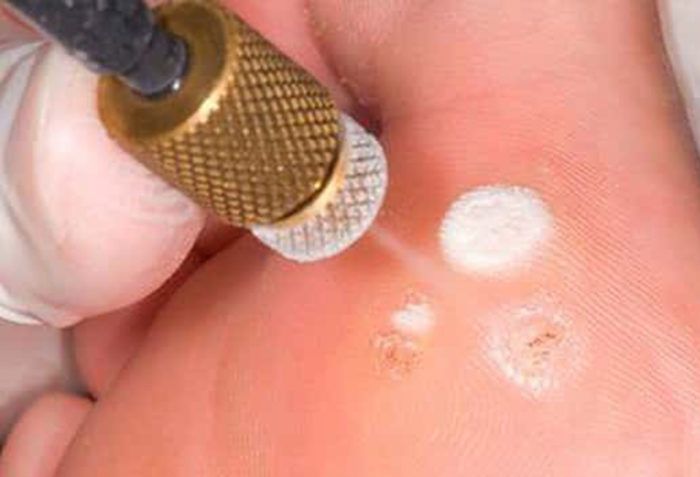
Alternative removal methods
The method of papilloma removal is determined by the characteristics of the patient’s skin, the size of the formation and its location. So, along with cryodestruction, other methods of papilloma removal can be used.
- Electrocoagulation of papillomas : involves removing the formation and preventing their further growth by using electric current. To apply the method, an accurate diagnosis is necessary, because after the procedure, the tissue cannot be histologically examined (it will be impossible to determine whether the tumor was benign or malignant).
- Removal of papilloma with laser therapy : different types of tissues have different ability to absorb a certain wavelength of light; the radiated energy destroys the target tissue, leaving other tissues unaffected.
- Surgical removal of papilloma: sufficiently large formations on the skin are surgically removed along with their base. The procedure is performed under local anesthesia and the resulting wound requires suturing.
- Removal of papillomas with drugs : medical agents are used that stimulate and strengthen the immune system, as well as local exfoliating agents with tissue-destroying properties.
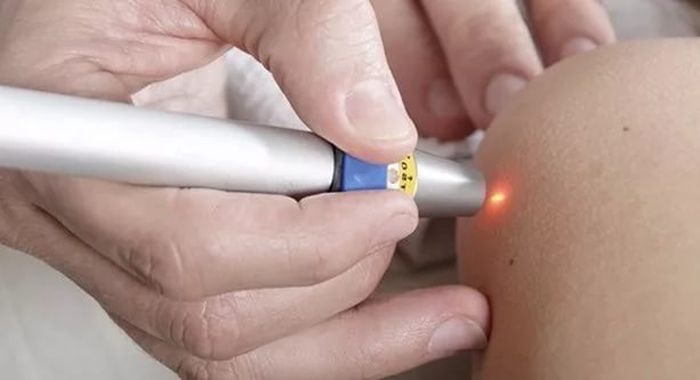
The choice of a specific method for removing papilloma occurs during a joint discussion between the doctor and the patient.
Cost and feedback on the procedure
The cost of the papilloma cryodestruction procedure ranges from 100 to 1000 rubles. Prices are largely determined by the localization of education, its size, the apparatus with which the procedure is performed, as well as the pricing policy of the clinic.
Accordingly, the city where the medical institution is located also determines the cost of the procedure: it is obvious that prices for cryotherapy in Moscow are somewhat higher than in the regions. It should be remembered that in some cases one procedure is not enough to completely remove the papilloma, and there is a need for several cold cauterizations.
Reviews of papilloma cryosurgery are mostly positive. Patients note a calm rehabilitation and the absence of any scars and spots on the skin after tissue repair (subject to professional exposure to tumors).
With regards to the pain of the procedure, opinions differ somewhat here – some patients note only a slight unpleasant tingling, while others consider the process of exposure to nitrogen to the skin quite painful. However, this aspect, as noted above, is largely determined by the pain threshold of the patient, and must be previously identified by the attending physician for the possible use of local anesthesia.
Conclusion
Papillomas on the skin are not a sentence. The modern level of development of medicine makes it easy to solve this problem. Cryodestruction, subject to the technique of carrying out, is one of the most effective and modern methods for removing papilloma.
The procedure has a number of advantages, including simplicity, safety and accessibility. The nature of the course of the rehabilitation period depends on the patient’s compliance with the doctor’s recommendations, both during the procedure and after it at home; while the recommendations are not at all difficult to follow. It is these factors that determine the popularity of the method among patients suffering from the papillomavirus.


